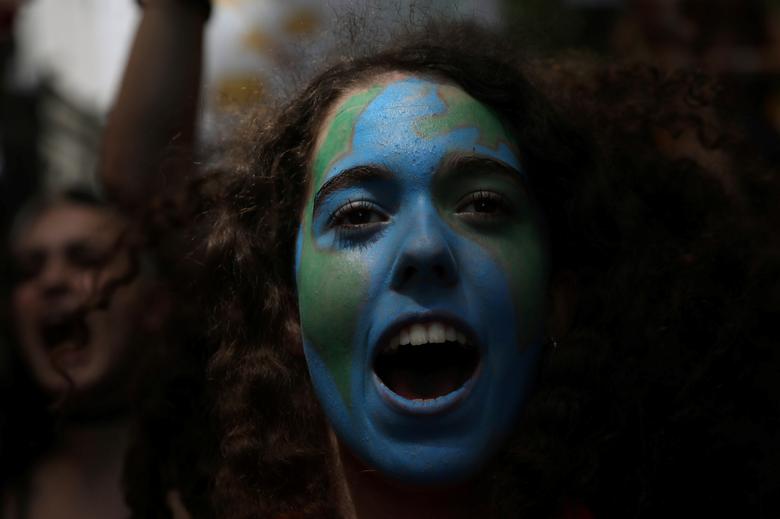In late September, the world witnessed millions of youth demonstrating across the globe, pushing for climate action. This is arguably the global social movement of our time.
One of the movement’s icons has been Greta Thunberg, a Swedish teenager who began a solo protest outside the Swedish parliament more than a year ago. This week she told US Congress to “listen to the scientists” and gave an impassioned speech at the UN, berating adults for leaving it up to youth to make sacrifices and take the lead on climate action.
“How dare you?” was heard around the world.
Youth and adults worldwide have been moved by Thunberg, and her young companions, including Anishinaabe teen Autumn Peltier. But they have also faced skepticism and hostility. Some members of older generations have looked upon these events through jaundiced eyes and questioned their credibility.
The role of social networks
Canadian member of Parliament, former cabinet minister and leader of the People’s Party, Maxime Bernier, called Thunberg “mentally unstable.” Bernier, and others, claim that youth like Thunberg are being manipulated, a sentiment echoed by Fox News. Thunberg was also subtly mocked on Twitter by the President of the US.
What is the significance of youth climate activism? Are Thunberg and other youth just being manipulated by adults? From a sociological point of view, there are a variety of intriguing aspects to this mass mobilisation.
Also read: ‘Our Futures Are at Risk’: Meet the Kids Skipping School to Join the Global Climate Strike
While I am not sure manipulated is the right word, in some cases climate strike participants are influenced by others. Youth leaders actively mobilise other youth at high schools and universities. In some cases youth also consult and interact with adults such as parents, teachers and activists.
Having social network ties and receiving encouragement to participate, is consistently one of the strongest predictors of who gets involved in mass mobilisation, no matter how old participants are. Some youth are influenced by others to get involved in protests, but the same is true for adults.
Climate justice
One lens through which to consider these issues is climate justice.
The idea is that those who have contributed the most carbon emissions and benefited the most from them tend to be less affected by the negative consequences of global warming. Those who have contributed less to the problem are typically disproportionately affected. Some dimensions of climate justice involve social class, global North-South citizenship, Indigeneity, race, gender and age cohort.
With regard to intergenerational equity, youth have contributed far less to emissions but during their lives they will be far more affected by climate change. Significantly, in recent decades, in Western countries at least, there are many more courses and programs on environmental topics available in the education system than there were 50 years ago.
When thinking about whether the youth participating in these mass mobilisations are being “manipulated,” it is useful to consider the fact that they have a higher stake in tackling climate change than older adults because they are fighting for their future, and on average, they are better educated on these issues.
Also read: Misogyny, Male Rage and the Words Men Use to Describe Greta Thunberg
Nevertheless, there are several apparent puzzles concerning youth involvement in politics and activism. For example, voting-age youth typically have lower voting rates and some research has shown that, demographically, lower numbers of youth are members of established environmental movement organisations.
At the same time, youth who are involved in the environmental movement tend to be relatively more engaged. For example, my research in Canada has shown that age is inversely related to environmentally friendly behaviour (such as taking alternative forms of transportation or reducing waste), environmental activism and having a plan to deal with climate change.
This is due to socialisation related to environmental education, current events and information campaigns led by social movements. Youth engagement in activism is also partly a function of “biographical availability” — being more flexible in terms of schedules and less susceptible to sanctions, such as being fired from a job.
Questioning business as usual
One answer for why are some people reacting against the recent waves of youth climate activism might be found from the insights of Bob Inglis. The former Republican, who had long been a climate denier, reversed his stance on climate change in 2010. His decision to come out as a believer in human-caused climate change may have cost him his seat in Congress.
During an interview in the 2014 documentary Merchants of Doubt, Inglis observed that if the scientists are right about climate change, then you are forced to question your whole way of life. This is a hard conclusion to accept, and it is easier psychologically to attack the messengers.
This could be one reason why people like Bernier are savagely attacking Thunberg and other youth. On the other hand, one of the reasons why youth climate activists are able to take on the role of messenger is that they are not nearly as tied to the status quo as older age cohorts.
As sociologist Doug McAdam has noted, if there is hope that social movements will play a significant role solving the climate crisis, it lies with the actions of the world’s youth.
David Tindall is Professor of Sociology at University of British Columbia
This article is republished from The Conversation under a Creative Commons license. Read the original article.
Featured image credit: Reuters
![]()

